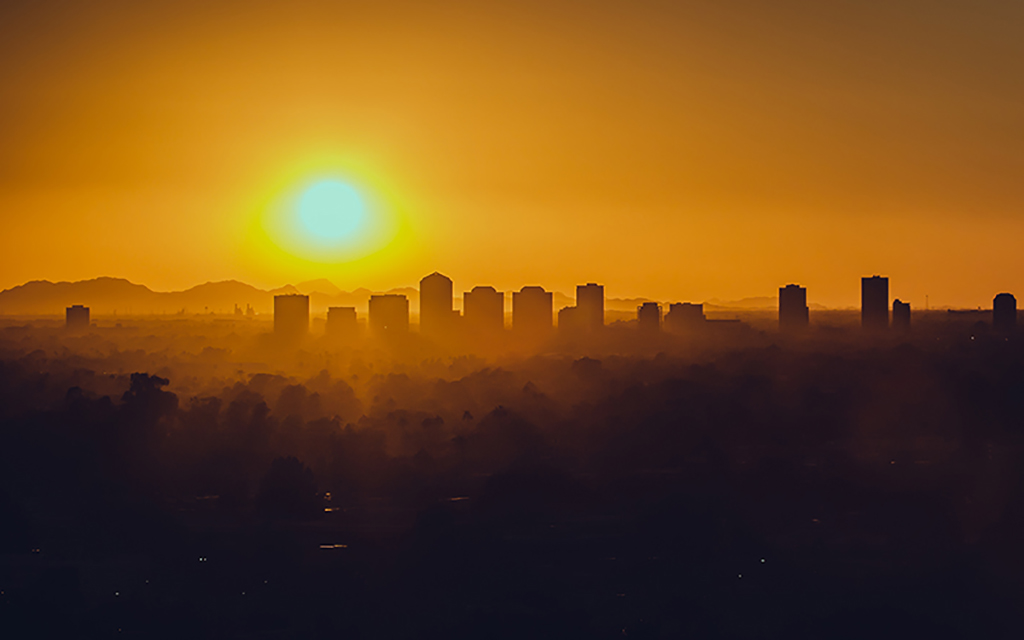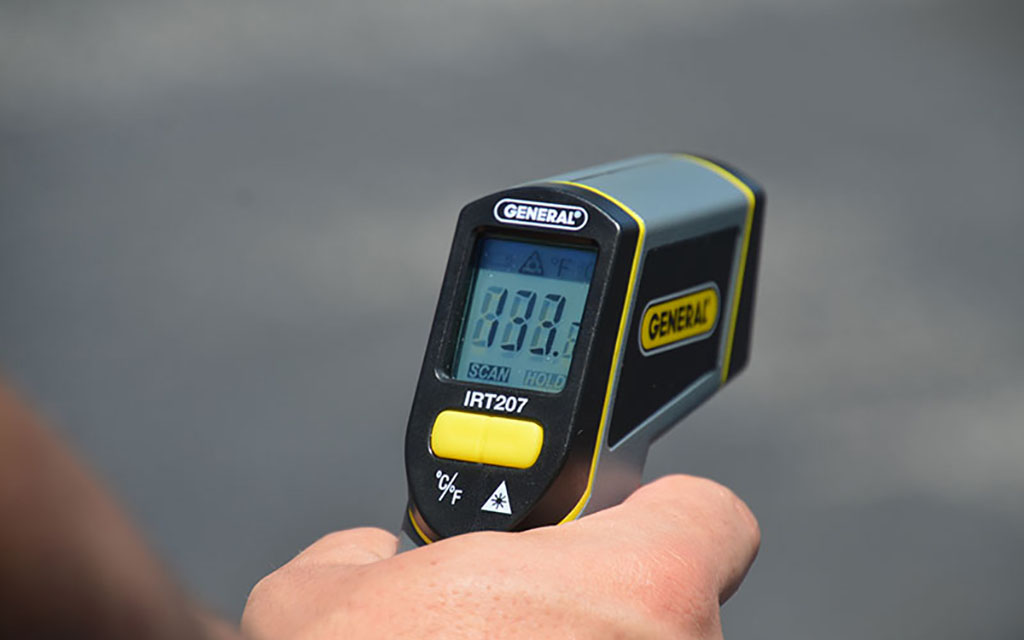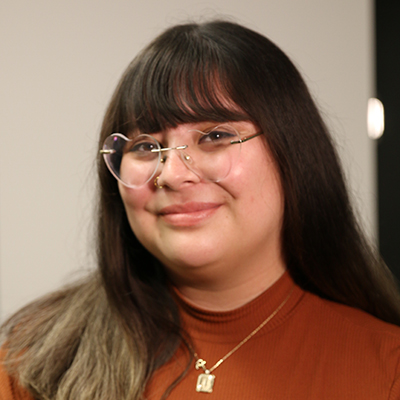
Summer heat is nothing new to Arizona residents, but medical officials are warning about a different type of threat: contact burns, that come from touching surfaces and pavement that have grown blistering hot in the unrelenting sun. (File photo by Jordan Evans/Cronkite News)

A woman covers her face while waiting in the shade in Tempe for the light rail in this 2018 file photo. Medical experts say surfaces like pavement can reach 180 degrees, and that a “fraction of a second” of cantact can result in an second-degree burn. (File photo by Devin Conley/Cronkite News)
WASHINGTON – Arizona Burn Center officials are warning about roads and surfaces that get blistering hot – literally – in the summer sun, after several years in which contact burns resulted in scores of hospital admissions.
The situation is particularly dangerous for the elderly, people who are homeless and methamphetamine users, who face high rates of exposure and may not be able to help themselves if they fall, said Dr. Kevin Foster, a burn surgeon at the center.
Foster warns that pavement in direct sunlight can reach 180 degrees. “At that temperature it only takes a fraction of a second to get a second-degree burn and exposure to a minute or longer results in a third-degree burn,” he said.
According to Valleywise Health, the number of patients admitted to the Arizona Burn Center with contact burns between June and August has ranged from 68 to 92 over the last six years, with 85 patients admitted in 2022. At a press event last week, Foster said the center had already admitted about 20 patients in June with another 10 in their care at the time.
Foster said the center has seen an increase in the number of burn patients on methamphetamine, with a record number admitted last year. He said an emerging trend of fentanyl-contaminated methamphetamine is causing users to fall unconscious, leaving them lying on the pavement for long periods of time.
“They fall down and oftentimes there’s nobody around to help them up … they remain unconscious for a period of time and then end up with really severe burns,” he said.

Temperature tests conducted by Phoenix workers on traditional asphalt reflect the absorption of heat. (File photo courtesy of City of Phoenix)
Last year was also the first year in which drug users accounted for more than half of all heat-related deaths in Maricopa County, according to the county health department. It said 54% of heat-related deaths in 2022 involved drug use.
Heat-related deaths of all types also set a record in Maricopa County in 2022, at 425 deaths – 25% more than the previous year.
The elderly have traditionally been the population most at risk of pavement burns and heat-related illnesses. People aged 50 and over accounted for nearly two-thirds of all heat-associated deaths in 2022 in Maricopa County, according to the department’s data.
Of the 85 patients admitted to the Arizona Burn Center last summer, the average age was 54, with the oldest patient being 91 years old.
“That particular population is still a problem,” Foster said. “Many of them have problems with mobility and ambulation … they go down and then they can’t get back up again.”
Homeless people are also disproportionately affected, accounting for around 30% of the patients treated last year, Foster explained. He said their injuries are almost always related to exposure due to a lack of shelter, and that without somewhere to go their care becomes even more complicated.
“Oftentimes, they’re alone and nobody is watching them,” Foster said. “Then when it comes time to discharge them back to a safe place it becomes very difficult, so they are particularly challenging patients.”
Contact burns are just one of the heat-related threated faced by people who are homeless, said Sean Little, a spokesperson for Phoenix Rescue Mission, a Christian nonprofit organization offering care to people experiencing homelessness and addiction.
Summer months are a particularly hard time for homeless people, said Little, who explained that getting water to homeless people in the community is a key priority then. The mission’s Code Red program focuses on distributing water to ward off strokes and other heat-related illnesses in the homeless population.
(Video by Isabel Garcia/Cronkite News)
“We have 20 people that are out driving around the streets, bringing water around and trying to get people connected with services,” Little said. “You’ll see people with heat stroke, you’ll see people that have rashes and skin things.”
For those with burns, treatment is often a lengthy and painful process. The center reported that patients required an average of two surgeries last year, while 70% required mechanical ventilation.
Surgeries and external treatments are not always enough, Foster explained, as burns and heat-related injuries can trigger a host of life-threatening complications, including brain damage, liver failure and renal failure. Last summer, 25% of the center’s patients required further hospitalization at separate facilities, while 33% needed intensive care, according to Valleywise Health’s “Streets of Fire” report.
“As our temperatures are getting hotter, we anticipate that it’s going to continue to be a problem and probably is going to worsen over time,” Foster said, adding that “almost all of these burns are preventable and we really want people to be aware of this problem.”


